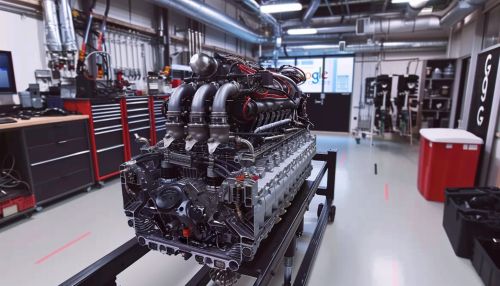Google V8
Overview
Google V8, also known as V8, is an open-source JavaScript engine developed by the Chromium Project for Google Chrome and Chromium web browsers. The project's creator, Lars Bak, aimed to increase the performance of JavaScript execution within browsers, which was a significant bottleneck for web application development at the time. V8 accomplishes this by compiling JavaScript directly into machine code before executing it, a departure from the traditional interpretation of JavaScript.


Architecture
V8 is designed with a multi-tiered architecture, which allows it to optimize the execution of JavaScript code based on the code's runtime behavior. The architecture consists of several components, including the Ignition interpreter, the TurboFan optimizing compiler, and the Orinoco garbage collector.
Ignition Interpreter
The Ignition interpreter is a low-level, register-based virtual machine designed to run JavaScript efficiently. It uses a bytecode format that is compact, reducing the memory footprint of JavaScript applications. The interpreter is also designed to be fast, with a focus on minimizing the overhead of decoding and executing bytecode.
TurboFan Compiler
The TurboFan compiler is the optimizing compiler in V8. It takes the bytecode generated by the Ignition interpreter and optimizes it based on the runtime behavior of the code. The compiler uses a variety of optimization techniques, including function inlining, dead code elimination, and loop unrolling. The goal of these optimizations is to generate machine code that runs as fast as possible.
Orinoco Garbage Collector
The Orinoco garbage collector is responsible for managing memory within V8. It uses a combination of mark-sweep and parallel, incremental, and concurrent garbage collection algorithms to minimize the impact of garbage collection on the performance of JavaScript applications.
Performance
One of the key goals of V8 is to improve the performance of JavaScript execution within browsers. To achieve this, V8 uses a technique called Just-In-Time (JIT) compilation. This involves compiling JavaScript code into machine code just before it is executed, which can significantly improve the performance of JavaScript applications.
V8 also uses a technique called inline caching to optimize the performance of property access in JavaScript. This involves caching the locations of property accesses in the JavaScript code, which can significantly speed up subsequent accesses to the same properties.
Security
V8 includes a number of security features designed to protect against common web-based attacks. These include mechanisms to prevent buffer overflows, protections against code injection attacks, and sandboxing techniques to isolate potentially malicious code.
Usage
V8 is used in a number of popular web technologies, including the Google Chrome and Chromium web browsers, the Node.js server-side JavaScript platform, and the Electron framework for building desktop applications with web technologies.
